We may earn a commission when you click on the affiliate links in this post.
Make Panda Express Chow Mein at home in under 30 minutes! This easy, delicious copycat recipe uses simple ingredients for a perfect side dish everyone will love.
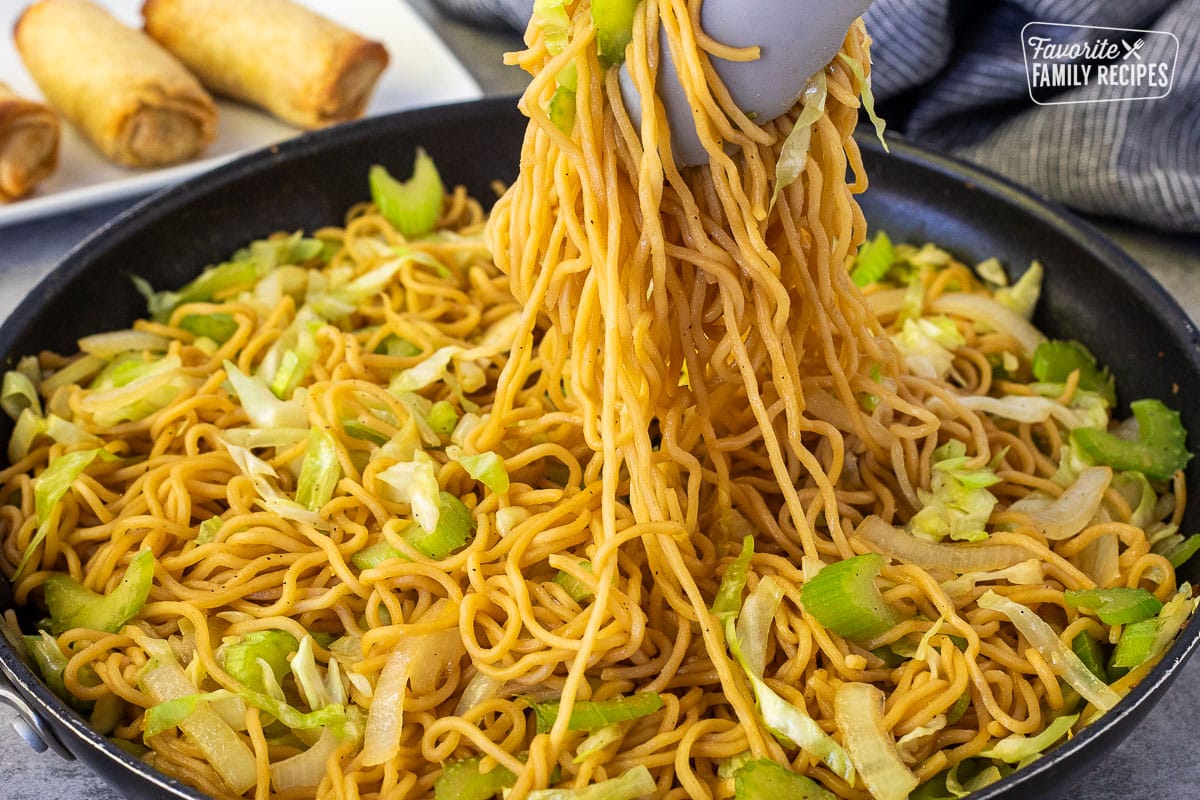
Crave-Worthy Chow Mein in 30 Minutes
Are you as obsessed with Panda Express Chow Mein as I am? I mean, it’s the ultimate sidekick to every entrée on their menu, right? Well, if you’re craving that delicious, savory goodness but want to skip the takeout, I’ve got you covered! This copycat Panda Express Chow Mein recipe is a game-changer, and the best part? You can whip it up in under 30 minutes with ingredients you probably already have in your pantry!
Let me take you back a few years. It was Christmas Eve, and we were hosting our annual Chinese takeout party. But, we weren’t near a Panda Express, and I needed enough chow mein to feed a small army (okay, just my family, but it felt like an army!). So, I decided to create my own version. And guess what? It was a massive hit! Everyone swore it tasted just like the real thing. Don’t just take my word for it—check out the comments below!
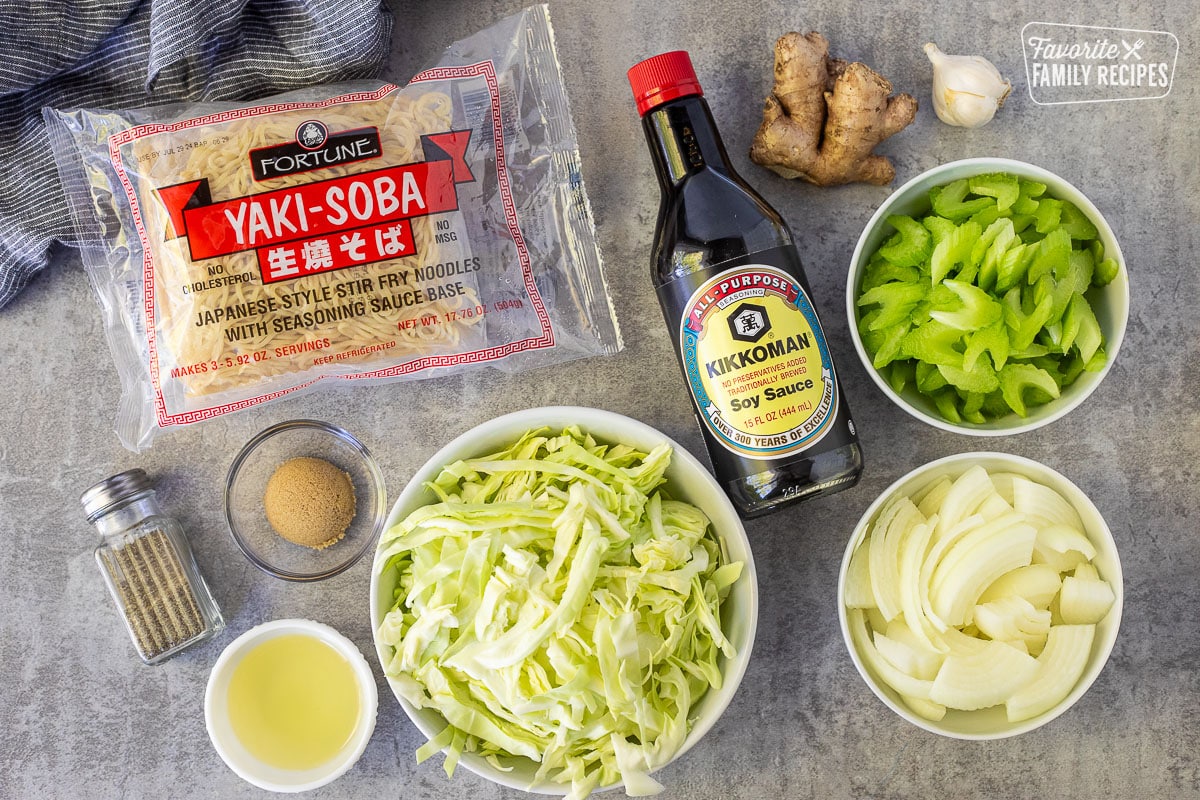
What You’ll Need for Panda Express Chow Mein
One of the reasons I love this recipe is because it’s super simple. Panda Express keeps it straightforward, and so do I! Here’s what you’ll need:
- Chow mein noodles: Prepared according to package instructions. Yakisoba, lo mein, or even undercooked ramen noodles work well too.
- Onion (white or yellow onion)
- Celery
- Cabbage
- Chow Mein Sauce
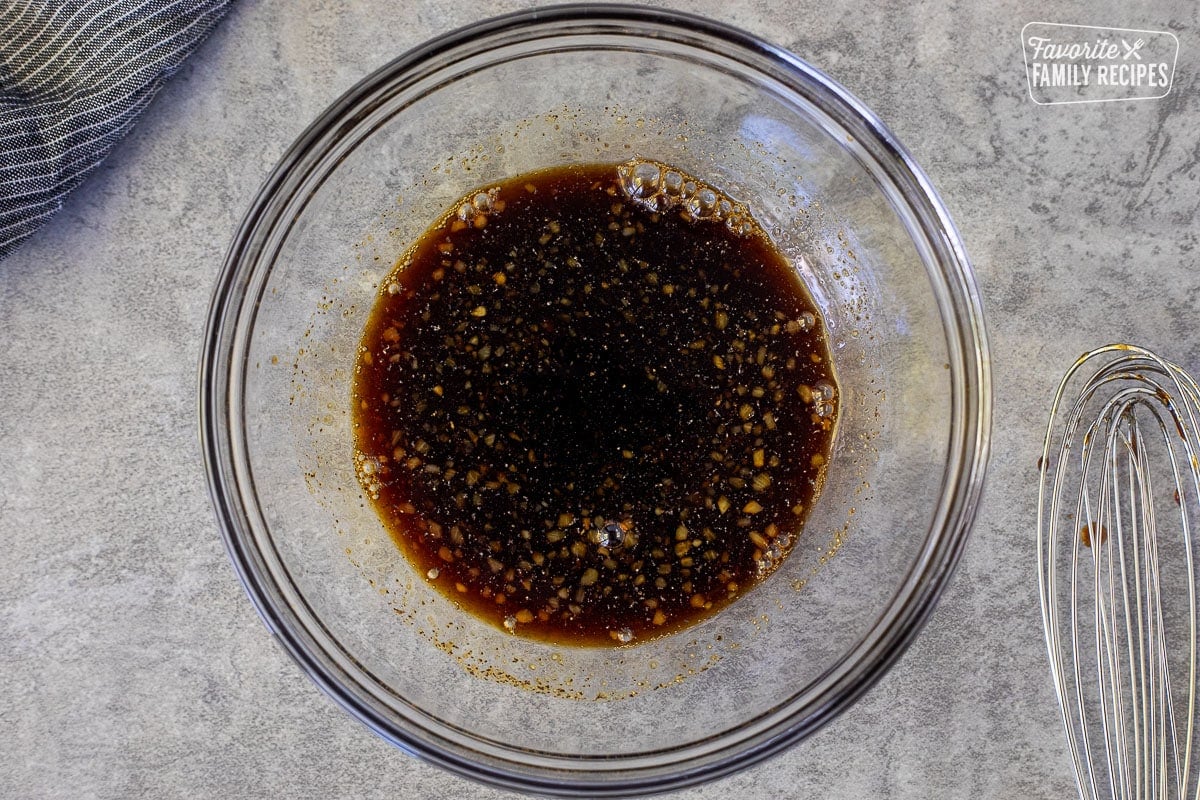
Ingredients for the Chow Mein Sauce:
This chow mein sauce uses only a few simple ingredients:
- soy sauce
- brown sugar
- garlic
- ginger
- black pepper
Want to add a twist? A dash of oyster sauce or a splash of Chinese cooking wine can take the flavor up a notch. For those who prefer a saucier dish, double the sauce recipe and stir in a bit of chicken broth. Heat it up, thicken with cornstarch, and voila!

Chow Mein vs. Lo Mein: What’s the Difference?
Ever wonder what sets chow mein apart from lo mein? The biggest difference is that one is stir-fried and the other is tossed in sauce. Here’s the lowdown:
Chow Mein:
- Translation: “fried” or “stir-fried” noodles.
- Preparation: Parboiled, then stir-fried until crispy.
- Texture: Slightly crispy, a bit oily, not easy to slurp. Some think that chow mein noodles are strictly crunchy, deep fried noodles, like the kind that comes in a canister, but that is only one type of chow mein noodle. The most common kind of chow mein noodle is the stir-fried kind, like what they use at Panda Express.
- Sauce: Minimal sauce.
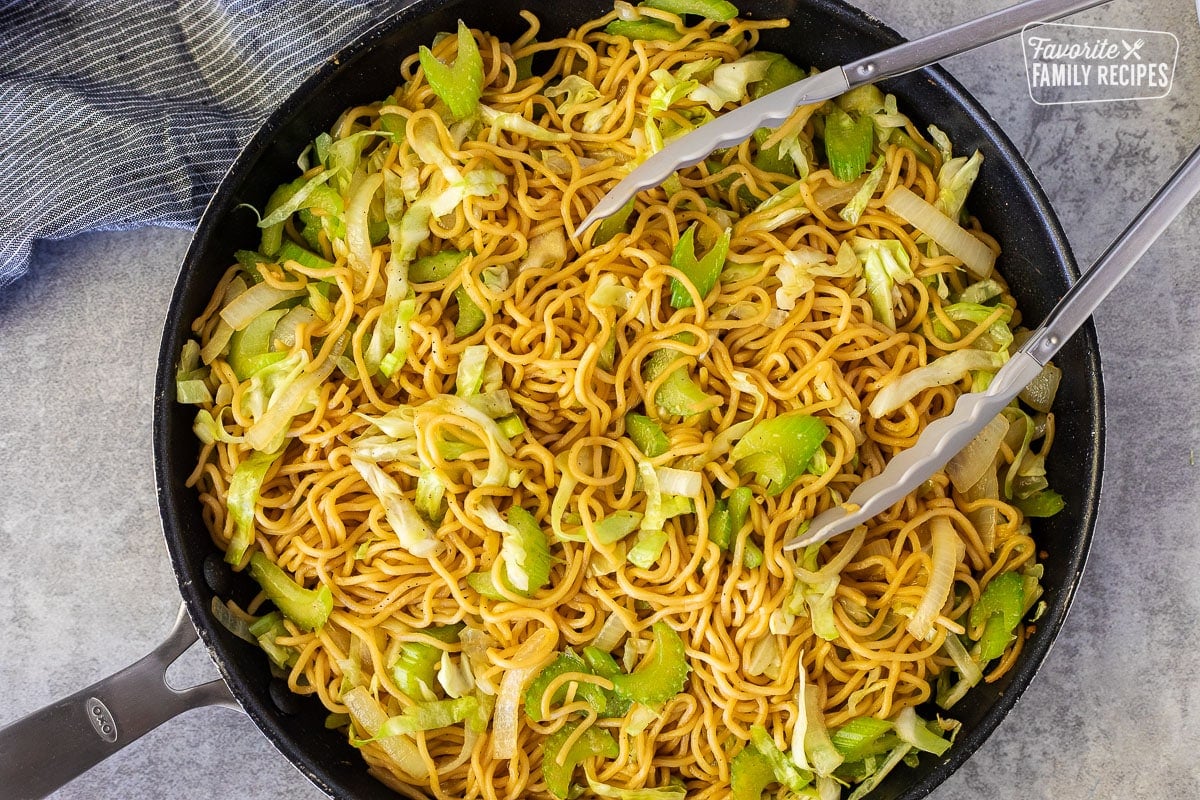
Lo Mein:
- Translation: “tossed” noodles.
- Preparation: Boiled until soft, then tossed with sauce.
- Texture: Soft and slurpable. It feels similar in texture to a spaghetti noodle.
- Sauce: More sauce than chow mein.
Some might argue that Panda Express chow mein is actually lo mein, but based on the stir-fried texture and minimal sauce, it’s definitely chow mein. Trust me, the “slurp test” doesn’t lie!
Now, can you make this recipe a lo mein if you wanted to? Absolutely! It is DELICIOUS as a lo mein! Just boil up your noodles separately and double the sauce. Toss together and serve.
Choosing the Best Noodles
The beauty of this dish is its versatility. Yakisoba noodles are my go-to for the perfect texture, but dry lo mein, ramen, or even spaghetti will do in a pinch. Just remember to stir-fry them for that signature chow mein vibe.
Pro Tips for Perfect Chow Mein
- Leftovers: Store in an airtight container in the fridge for up to 5 days. Reheat on the stovetop, in the microwave, or in the oven.
- Pan Choice: Use a large wok or deep non-stick pan for easy stir-frying.
- Flavor Boost: A touch of sesame oil can add depth, but use sparingly to avoid overpowering the dish.
- Veggie Variations: Feel free to toss in your favorite veggies like carrots, pea pods, or broccoli for extra crunch and color.

Storing and Reheating Chow Mein
Got leftovers? Lucky you! Cool your chow mein to room temp, then store in an airtight container. It’ll keep in the fridge for 4-5 days. When reheating, add a splash of water or sauce to maintain moisture. Heat in the microwave, stovetop, or oven, and enjoy it all over again! In the oven, cover with foil and bake at 350°F for 20-30 minutes. Keep an eye on it to prevent overcooking.
More Panda Express Recipes to Try
Pair this chow mein with some of our other favorite Panda Express-inspired recipes like Kung Pao Chicken, Chinese Barbeque Pork or any of these other Panda Express recipes:
Orange Chicken
Mushroom Chicken
String Bean Chicken
Ham Fried Rice
Ready to bring the taste of Panda Express to your kitchen? Give this recipe a try and let me know how it turns out. Happy cooking!

Panda Express Chow Mein (Copycat)
Video
Equipment
Ingredients
- ¼ cup soy sauce
- 1 tablespoon brown sugar
- 2 cloves garlic, minced
- 1 teaspoon grated fresh ginger
- ground black pepper, to taste
- 2-3 tablespoons vegetable oil
- 3 (5.6 ounce) packages Yakisoba noodles or Chinese Egg Noodles (Found in the produce section of the grocery store. Usually, the 3 packages are sold together in one 17oz. pack)
- ⅔ cup celery chopped diagonally
- 1 medium onion, thinly sliced
- 2 cups chopped cabbage
Instructions
- In a small bowl, combine soy sauce, brown sugar, garlic, ginger, and black pepper. Set aside.

- Remove noodles from packages and discard included flavoring packets. Rinse noodles well, drain, and set aside.
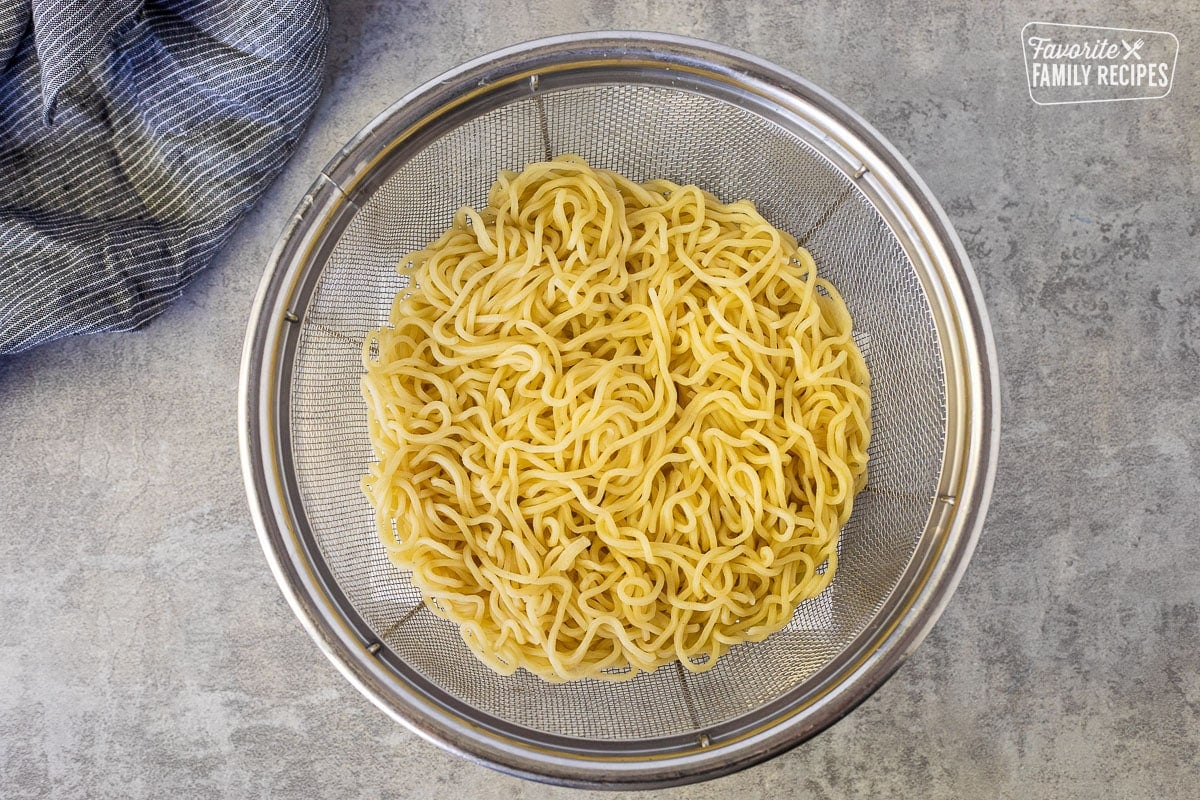
- Heat oil in a large wok or skillet over medium heat. Add celery and onion and sauté for about 1-2 minutes or until onions start to become soft and transparent. Add cabbage and sauté an additional minute.
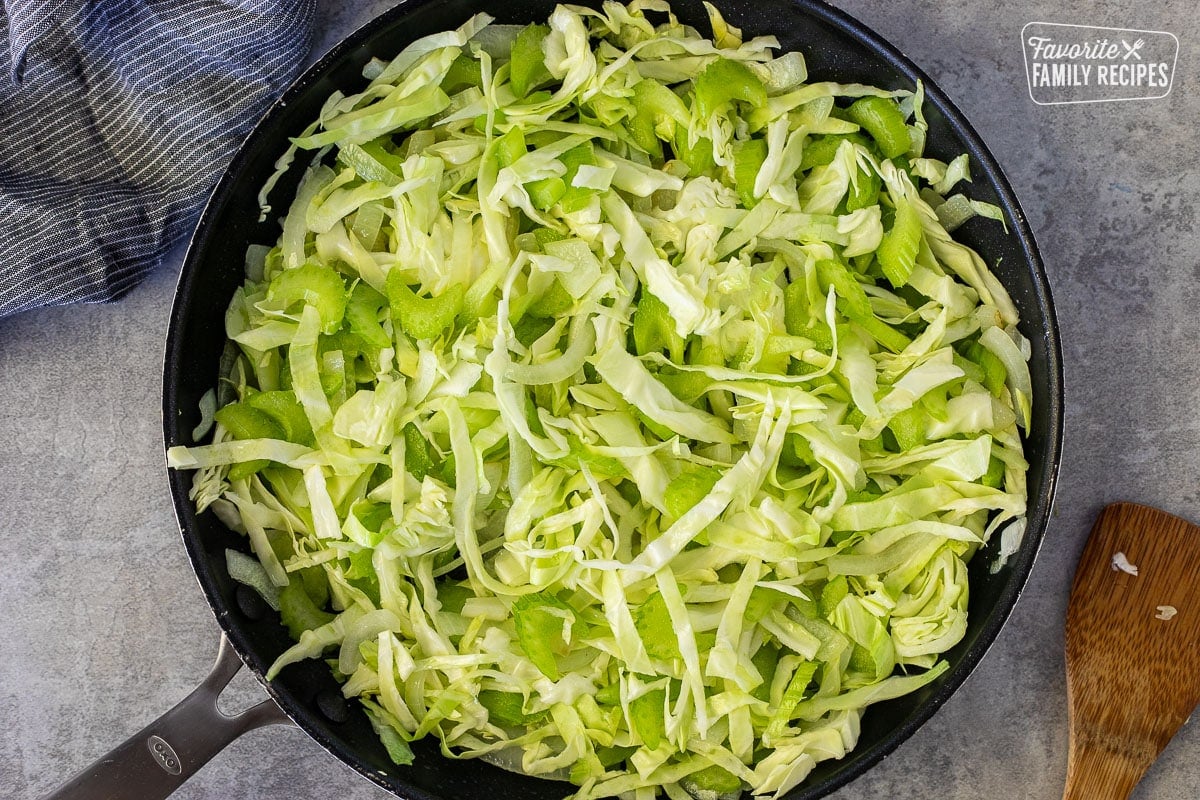
- Add noodles and soy sauce mixture to the vegetables. Stir-fry over medium-high heat for an additional 2-3 minutes or until noodles are heated through.

Notes
- In this recipe, you can add a shake or two of sesame oil to the vegetable oil to add a deeper flavor, but don’t overdo it! I am not including it in the recipe because the sesame oil flavoring can become overpowering really quickly if you aren’t careful. I have made it both ways (with and without sesame oil) and they both taste great.
- Don’t overcook the noodles. Overcooking them can cause them to break. You want them to be just heated through.
My daughter used to call it ‘Panda Experts’, so my knockoff version we’re calling Panda Experts Noodle Bowls! This was a definite hit. I used a 3-part mix of dark soy sauce, regular soy sauce, and shaoxing cooking wine for the 1/4 cup soy sauce. Also, don’t forget the MSG. I then coated chicken cubes and shrimp separately with a generous mix of 1:2 cornstarch and flour mixed with salt, msg, garlic powder, and ginger powder. After the noodles are out of the wok and it’s wiped clear, you can put these in over medium high heat with new oil. Cook each coated protein separately, and then I put them in a bowl, adding a sweet and spicy Asian style wing sauce to give a great Panda Express-like flavor.
Can I use ramen noodles or spaghetti if I can’t find yakisoba noodles?
I am unsure if any of these reviewers have actually tried Panda’s noodles. This recipe — although grateful for the time and effort it took to post it on a blog — is not it. It is not even close to it. The flavor is by far mediocre, and I had to make several adjustments to save the batch. As a seasoned cook who loves trying new recipes, this one was the biggest disappointment in a very, very long time.
My kids are annoyingly picky and noodles from Panda Express are one of the only things they love. I didn’t have a lot of hope but they actually really liked this. It was easy and delicious. I didn’t have any vegetable oil, so I used olive oil and it worked. I also doubled the sauce recipe based on other comments but I probably shouldn’t have done that. It was a little too salty, I’m sure the recipe as written would’ve been better (my mistake). I don’t know what the person who wrote the novel in the comments was talking about – it had enough vegetables (similar to panda Express portions) and the sauce tasted just like panda Express. Also adding garlic at the end makes sense since it doesn’t need a long time to cook. I used cabbage from a bag of shredded cabbage, purple cabbage, and carrots. Anyway, I’m very happy to have found this recipe because now I have a meal I can make regularly that my kids will actually enjoy.
I used fresh chow mien noodles which I boiled for 3 minutes before stir-frying. Good, basic recipe, though next time I’d add more of the soy sauce mixture because it could use a bit more moisture.
What should I do with the yakisoba seasoning? I don’t want to discard it because I want to do my part for the food waste effort. How would I make this recipe waste-free?
We haven’t tried using them for anything else, but if you come across any ideas let us know!
Thanks for the information you shared about Panda Express Feedback I appreciate your efforts and taking the time and sharing this content.
Awesome recipe! I used red cabbage, carrots, and celery; coconut aminos instead of soy sauce, spaghetti noodles and no brown sugar. Very easy and tasty! Saving to my favorites 🙂
I made this recipe exactly as published, except that I only had 10 oz of noodles, so I used 2/3 of the listed quantities.
There are several problems with this recipe:
1. Even 10 oz of noodles are a LOT of noodles, and you actually used 17 oz of noodles. In your pictures, it looks like about 2 oz of noodles. Very unrealistic representation.
2. Not enough veggies. I kept the ratios the same as you listed, yet the cabbage and celery “disappeared” in the huge vast of noodles.
3. OK, the biggest problem. The sauce. I made the full amount you listed, even though I had 1/3 less noodles. It was NOT NEARLY enough sauce. Also, I’m not sure that a soy sauce based “sauce’ is right for this. It did not look or taste like Panda Express chow mein.
One additional comment. The garlic should be sauteed at the start along with the onions and celery, in order to release the flavors and aroma of the garlic, before adding other ingredients. Having the garlic swim around in the sauce and added last, doesn’t do much as far as the garlic.
The bottom line is that I felt like I was eating a bowl of “sauceless” spaghetti. Definitely didn’t get any kind of Panda Express vibe.
I am sorry this recipe didn’t work for you. Thanks for the tips and info you provided!
I left out celery and cabbage due to not having it on had and paired it with a pepper steak dish. I used sesame oil and I will be making this again and again my family loved it. Thank you for the recipe!
I want to add broccoli and pea pods. When do I add those and how long to cook?
You can add them at the same time as the celery!
I would steam them until bright green, which is a short amount of time that sneaks up on you if you’re not watching. MUCH better and more like a Chinese restaurant than cooking them in the sauce.
My kids said this was better than panda. I did add the tiny bit of sesame oil.
I’m trying to count my macros. I viewed the nutrition facts but it didn’t say what a serving size was. Can you please advise on serving size based on the nutrition listed? Thanks for posting this recipe.
We don’t have an exact serving size, but the total recipe serves 8, so about 1/8 of the recipe.
I LOOOVVE this recipe!! I went with adding a dab of sesame seed oil & used olive oil. I also used konjac noodles & truvia brown sugar to make it keto. Soooo good!!!
We always cook our soy sauce to allow the flavors to blend, bring it to a quick boil, then allow it to cool.
This Panda Express Chow Mein is so delicious. I used Coconut Secret Traditional Coconut Crystals that I bought from Karman Foods for a healthier version. It’s also best paired with Vitasoy Vita Reduced Sugar Chrysanthemum Tea.
made it with two packs of ramen noodles with out the seasoning and was spot on.
Ramen noodles=Perfect. Excellent and easy Dish!
I made the Panda Express Chow Mein and it was truly delicious. Will be making this again for sure.
I’m so glad you liked it! I think it’s even better than Panda’s because it’s less greasy. Thanks for sharing!
I will try this it looks yummy delish and I love making Chinese for friends and family.
Loved this recipe! Next time will add peanuts and sesame seed. We had it for lunch and it only served 3 of us.
I appreciate, cause I found exactly what I was looking for. You have ended my four day long hunt! God Bless you man. Have a nice day. Bye